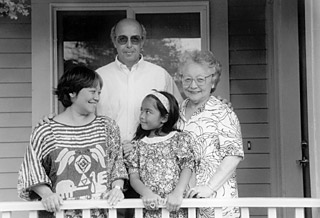Outcomes
The three intensive service projects described have produced the best outcomes of all Center services:
- The MIRACLE Project was extremely successful. Outcomes included an increased rate of kinship placements among infants born during maternal incarceration, and post-release mother-child reunification in more than 90% of mothers released to the community. Mothers reunited with their infants following release demonstrated an increase in responsive parenting. Outcomes of pregnancy for MIRACLE participants included less than 2% congenital disabilities, low birth weight, prematurity, or neonatal hospitalization among participating infants. Among mothers released from incarceration, only 1% became pregnant again within 12 months of delivery of their first MIRACLE baby, less than 2% had their infant removed from their custody and placed in foster care, and less than 5% have been rearrested.

- Mother’s Institute outcomes included post-services increases in objective knowledge of parenting, family life issues including sexual relationships and reproduction, family resources management and child development topics among 72-100% of participants. Other short-term outcomes included increased maternal utilization of community resources and decreased maternal stress. About half of all participating mothers elected to be released to residential, mother-child drug treatment programs. Most Institute mothers reunited with their children shortly after returning to the community; among Institute graduates who have been released from incarceration, 87% reunified with at least one child and 68% reunified with all of their children within three months of release. More than 91% of released Institute mothers remain in the community—including 82.6% who have completed parole and 8.7% who are still on parole. Only 8.7% of Institute participants have been rearrested.
- Measurement of ChildSpace outcomes was difficult due to variable levels of participation. For example, the range of visits per family was one to 112. In addition, ChildSpace was utilized by the Child Protective Services to conduct Court-ordered visits for families prior to terminations of parental rights, making simple counts of mother-child reunification impossible. Outcomes for families that participated in two or more visits included a decrease in parenting stress among mothers; decreased perceived stress and increase in utilization of community resources by children’s caregivers; and increases in positive maternal-child interactions in proportion to the number of family visits.

While the grants and contracts that supported these projects did not fund formal evaluations or allow measurement of long-term effects, the projects’ short-term and intermediate-term successes suggest that the services rendered will significantly improve long-term outcomes for participating children.
A Developmental Approach to Working with Children of Incarcerated Parents
Over the last three decades, although little was known about their development, children of prisoners became recognized as a group with special needs arising from the current status of their parents. This focus obscured the nature of the challenges they face and the actual causes of their long-term outcomes, which have only recently begun to be identified by large-scale studies.
Taking a developmental approach throughout the same period, the Center for Children of Incarcerated Parents has applied the following research-based, child-focused principles to delivery of services in order to improve the outcomes of prisoners’ children:
- As with all children, the lives and outcomes of prisoners’ children are determined by their experiences. Consequently, efforts to assist these children must begin with thorough assessments that explore and document their significant life experiences and their representations of those experiences.
- To be effective in improving children’s developmental outcomes, including the outcomes of prisoners’ children, services must increase children’s good experiences (developmental resources/supports) or decrease children’s bad experiences (developmental insults), or both.
- Outcomes for the large population of prisoners’ children appear to be due to high levels of family stress, low levels of parental education and related unemployment/underemployment, parental mental illness, and/or parent substance dependency. All of these circumstances can be improved by appropriate services.
- Development of the person is built, stage by stage, on the foundation laid down in previous stages. While on-going care and experiences are important in determining children’s developmental outcomes, they are always built upon the experience of children’s earliest care and their primary attachment relationships with parents and caregivers. As a result, services that are delivered early in the lives of prisoners’ children and address their caregiving relationships will have the greatest effect on child development and child outcomes, including intergenerational crime and incarceration.
Playing with dolls during a ChildSpace visit, Bella says, “This one is the mommy doll. Her name is Natalia. This one is the baby doll, her name is Bella. They don’t have a house yet, but they will.”
Alyssa had a clean disciplinary record for 7 months prior to release, her longest period of good behavior in all four of her incarcerations. Adamant at enrollment in the Institute that she would be released to the home of her girlfriend, Alyssa instead entered a residential parole program that would allow her to have overnight visits with her children.
Natalia and Jasmine enrolled and excelled in the Mothers’ Institute. They completed the basic Empowerment cycle of services, as well as Leadership and Advocacy cycles, over a period of 18 months. They subsequently became Peer Counselors for the Program. Exemplary prisoners with no disciplinary history in spite of extensive friendships with women who remain in the mix, Natalia and Jasmine have become effective parent models and advocates for other incarcerated mothers.
Dominique refused to be placed in a drug treatment program and returned home after her release. Two weeks later, she asked her parole officer for a placement. “I could see the difference in the twins, the way they related to me after I started using again. I could never see that with my others, but I guess I know these babies better because of ChildSpace.”
Jasmine’s son Derek says, “Me and my mom are doing good. We had bad things happen to us but we got over them. We’re still a family.”




